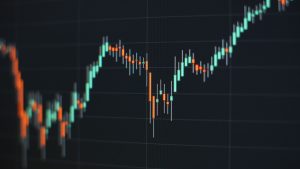The global stock market has experienced a rebound after a period of volatility, driven by a combination of improved economic data and easing concerns about inflation. The market’s recovery has provided some relief to traders and investors who have been navigating uncertainty due to rising interest rates and geopolitical tensions.
In this blog, we will break down the key drivers behind the stock market’s recovery, explore what traders should be watching in the coming weeks, and highlight strategies to capitalize on this new market environment. We’ll also show you how EPIQ Trading Floor can help you stay ahead of market shifts with real-time signals, expert analysis, and tools to navigate volatility.
1. What’s Driving the Stock Market Rebound?
The recent stock market rebound is attributed to a mix of positive economic data, easing inflationary pressures, and renewed investor confidence. Let’s take a closer look at the factors behind the market’s recovery.
A. Positive Economic Data
Recent economic data, particularly in the U.S. and Eurozone, has been more optimistic than anticipated. U.S. job growth has remained steady, while industrial production has shown resilience despite concerns about slowing global growth. These indicators have helped alleviate fears of an imminent recession, allowing the market to recover.
Additionally, corporate earnings reports have been better than expected, with several major companies beating forecasts. This has boosted investor sentiment, encouraging further investment in equities.
B. Easing Inflation Concerns
Inflation, which has been a key concern for both policymakers and investors, appears to be moderating. Recent data suggests that price pressures may be easing, particularly in sectors like energy and commodities, where prices have come down from their peaks. As a result, markets are adjusting their expectations for future interest rate hikes by the Federal Reserve and other central banks.
With the possibility of a more dovish monetary policy on the horizon, investors are becoming more optimistic about the prospects for equities, pushing stock prices higher. Learn more about how inflation impacts financial markets.
Key Takeaway: The stock market rebound is driven by positive economic data and easing inflation, giving investors renewed confidence and pushing prices higher.
2. Key Sectors Leading the Recovery
Not all sectors of the stock market are rebounding equally. Some industries have benefited more from the improved economic outlook and easing inflation. Let’s look at which sectors are driving the current market recovery.
A. Technology
The technology sector has been one of the key beneficiaries of the recent market rebound. As inflation concerns ease, tech companies, which are more sensitive to interest rate hikes, are seeing renewed investor interest. Additionally, positive earnings reports from major players like Apple and Microsoft have fueled optimism in the sector, leading to strong gains in tech stocks.
B. Consumer Discretionary
The consumer discretionary sector is also benefiting from the improved economic environment. With inflation easing, consumers have more disposable income to spend on non-essential goods and services, which has boosted retail and leisure stocks. Companies like Amazon and Tesla have seen strong demand, contributing to the sector’s recovery.
C. Financials
The financial sector has experienced a rebound as well, driven by expectations that the Federal Reserve may slow the pace of rate hikes. Banks and financial institutions typically perform well in rising interest rate environments, but the sector has also benefited from improving market conditions and increased consumer confidence.
Key Takeaway: Technology, consumer discretionary, and financials are among the sectors leading the stock market’s recovery, presenting potential opportunities for traders looking to capitalize on sector-specific momentum.
3. How Should Traders Approach the Market Now?
With the stock market showing signs of recovery, traders must adopt the right strategies to maximize their potential returns while managing risks. Here are some key strategies to consider:
A. Trend Following
In a market rebound, trend-following strategies can be particularly effective. Traders can use technical indicators like moving averages and RSI (Relative Strength Index) to confirm upward trends and identify buying opportunities in stocks or sectors that are gaining momentum.
B. Sector Rotation
As different sectors lead the recovery, traders should consider sector rotation strategies to take advantage of changing market conditions. By shifting capital into the sectors showing the most strength—such as technology or consumer discretionary—traders can capture gains from sectors that are outperforming the broader market.
C. Risk Management
While the market may be rebounding, it’s important for traders to continue practicing strong risk management. This includes setting stop-loss orders, diversifying portfolios, and avoiding overexposure to any single stock or sector. Given the ongoing uncertainty in global markets, managing risk effectively is key to long-term success.
Key Takeaway: Traders should consider trend-following strategies, sector rotation, and strong risk management practices to capitalize on the stock market rebound while mitigating potential risks.
4. What to Watch in the Coming Weeks
While the stock market’s recovery is encouraging, there are still several key factors that traders should keep an eye on in the coming weeks. These events could either sustain the rally or trigger new volatility.
A. Central Bank Policy
Traders will be closely watching for any updates from central banks, particularly the Federal Reserve and the European Central Bank (ECB). Any changes in the expected pace of rate hikes or comments on inflation could have a significant impact on market sentiment.
B. Corporate Earnings
With more earnings reports set to be released, traders should monitor how companies are performing in the current economic environment. Strong earnings could continue to fuel the recovery, while any negative surprises could lead to a pullback in stock prices.
C. Geopolitical Tensions
While the market is currently focused on inflation and economic data, ongoing geopolitical tensions—such as those in the Middle East and Eastern Europe—remain a potential source of market volatility. Any escalation in these regions could lead to renewed risk-off sentiment, pushing investors back into safe-haven assets.
Key Takeaway: Traders should stay informed about central bank policies, corporate earnings, and geopolitical tensions to better navigate potential market shifts.
Leverage Real-Time Market Insights with EPIQ Trading Floor
Navigating a volatile market requires access to real-time data, expert analysis, and effective trading strategies. EPIQ Trading Floor offers traders the tools they need to stay ahead of market trends and take advantage of opportunities during a recovery.
With EPIQ Trading Floor, you can access:
- Real-time trading signals to capitalize on market rebounds.
- In-depth analysis of market trends and key sectors.
- A community of traders to share strategies and insights.
Start your 3-day free trial today! Join EPIQ Trading Floor to gain access to exclusive market insights, real-time alerts, and a community of traders to help you succeed.
Disclaimer
The information provided in this blog is for educational purposes only and does not constitute financial advice. Always conduct your own research before making any investment decisions.










Responses